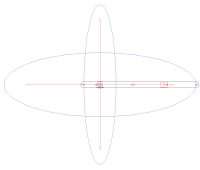Overconstrained mechanism

An overconstrained mechanism is like a puzzle that has too many pieces that fit together in only one way. Imagine you have a wooden puzzle with only a few pieces that can fit together, but suddenly someone gives you extra pieces that don't seem to fit anywhere. When you force the extra pieces into the puzzle, you might actually break or damage the puzzle because it is now overconstrained.
Similarly, in mechanical engineering, an overconstrained mechanism is a system where there are too many mechanical components or constraints that restrict the motion of a machine or device beyond what is necessary for it to work properly. When there are too many constraints or pieces, it can prevent the mechanism from moving smoothly, which can cause it to malfunction or fail altogether.
For example, a simple machine like a wheelbarrow has only a few parts that connect with each other to allow you to move a load from one place to another. If someone suddenly adds extra supports, like a suspension system or additional wheels, it might become too constrained, making it difficult or impossible to push around. The same can be true for more complex machines and devices, like airplanes or robots, where too many parts or constraints can cause interference or limits on their movement.
In summary, an overconstrained mechanism is like a puzzle filled with too many extra pieces, making it difficult or impossible to work properly. This can cause problems in machines and devices when too many components or constraints restrict their movement beyond what is necessary or desired.
Similarly, in mechanical engineering, an overconstrained mechanism is a system where there are too many mechanical components or constraints that restrict the motion of a machine or device beyond what is necessary for it to work properly. When there are too many constraints or pieces, it can prevent the mechanism from moving smoothly, which can cause it to malfunction or fail altogether.
For example, a simple machine like a wheelbarrow has only a few parts that connect with each other to allow you to move a load from one place to another. If someone suddenly adds extra supports, like a suspension system or additional wheels, it might become too constrained, making it difficult or impossible to push around. The same can be true for more complex machines and devices, like airplanes or robots, where too many parts or constraints can cause interference or limits on their movement.
In summary, an overconstrained mechanism is like a puzzle filled with too many extra pieces, making it difficult or impossible to work properly. This can cause problems in machines and devices when too many components or constraints restrict their movement beyond what is necessary or desired.
